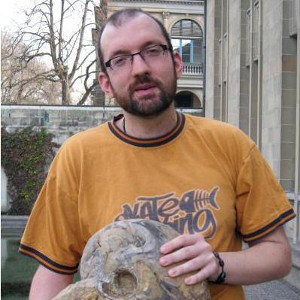Tag: Kenneth De Baets

Kenneth De Baets is a paleobiologist. He was interested in dinosaurs since he was in Kindergarten and studied Geology at the University of Ghent in Belgium with the aim of becoming a paleontologist. During his studies, he became more fascinated by extant and fossil invertebrates, particularly cephalopods after he saw a documentary on the intelligence of octopuses . He did his Master on Jurassic ammonoids (extinct cephalopods with an external shell) and did a PhD in evolutionary biology on the origin and early evolution of ammonoids at the University of Zürich, Switzerland.
He currently has a temporary teaching position as assistant professor at the Geozentrum Nordybayern at the Friedrich-Alexander University Erlangen-Nuremburg. His main research focuses on disentangling large-scale patterns in body size or morphology through deep time (macroevolution) and how these can be driven by both biotic interactions (e.g., parasitism) and abiotic factors (e.g., climate). His main tools for this purpose are invertebrates, ranging from ammonoids with a good fossil record to parasitic flatworms with a poor direct fossil record, both underdogs in paleobiological research.
He loves his job, particularly the diversity of it, including field work to make interesting new discoveries , browsing in more to less dusty museum collections, collecting and crunching data to test new research hypotheses related to evolution or environmental change, teaching and supervising students, and engaging with the public or children to illustrate the importance of basic research. In his spare time, he likes to cook, spend time with his family, host local radio shows and watch movies.
Contact Details:
GeoZentrum Nordbayern, Friedrich-Alexander Universität Erlangen-Nürnberg, Germany.